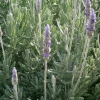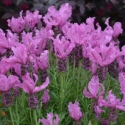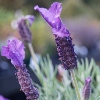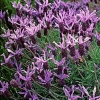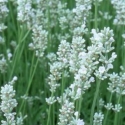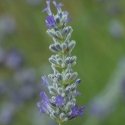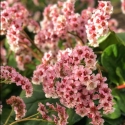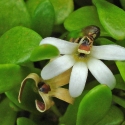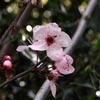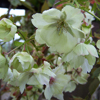It's only the 9th of November and already I feel that we are on that downward spiral to Christmas and its only going to heat up and get quicker. I hear the adverts on telly and the radio starting to promote the hype that goes with this advancing time of year.
In my head there is the beginnings of a checklist of all the things that I need to do from starting the planning of our usual Christmas function to organising the stats and staff holiday roster for a seven day a week business (yes we are only closed Christmas day) and to keeping the garden
up to scratch and that is an abbreviated list.
In the garden we have ripped out all the begonias that have finished or were well past their use by date and have a hankering to plant dwarf orange marigolds and so on the phone I get to source some of these. Of course I want it to look amazing for Christmas day as all the families will be around at some point. There is also a plan afoot to plant some of my favourite maples,
Mikawa Yatsuba, in some kind of oriental pots to grace the patio area. Those maples will look amazing beside our
Matapouri Blue Totaras that we are training as cloud trees with trailing white geraniums planted all around the base. There is also a really cool Japanese umbrella pine in a matching pot. I know, I'll own up, I am a self confessed total plant nerd ... just can't help myself.
I know, that in a another couple of weeks, all the hornbeam and beech hedges will have expanded and I will need to plan time to get these all trimmed before the big day. Then, also know that, the bay and camellias hedges will need doing as typically all the expanded spring growth will have started to harden off a few weeks before Xmas. Usually all the families and friends grab a glass of sparkles and wander the display garden and so that garden will have to be up to scratch too and so the buxus hedges, spirals and cones will need to be trimmed and looking sharp. Just as well we have an amazing team who just love doing it. There was some mention by someone in facebook that they think we have gnomes helping us, I can assure you they aren't much help.
Lavender of the English kind
To me, these are the real deal, if we are talking Lavenders. Angustifolia is the main species that there are many cultivars off these .... one could say that lavenders are quite keen on getting it on togather and so there are many crosses and hybrids ... for example Intermedia is a cross between Angustifolia and latifolia.
The easiest way to describe the English types is that they have the tall flower spikes with the flowers at the top and if you caress the flower then you will get that classic lavender fragrance. The bush itself is usually more compact and silvery grey in colour and I have found these types have quite a long life in the garden if properly looked after. English lavender don't only look gorgeous in the garden but some cultivars are used in the manufacture of essential oils and the flowers dry well making them suitable for dried arrangements, floral work and potpourri not too mention lavender sachets for the pillow and clothes drawers. These are also the ones you use for cooking with as I reflect that someone once gave me a jar of sugar with an English lavender flower in it.
English lavender, like all lavenders, enjoy full sun and perfect drainage, to do well, and perhaps not to much mulch around the plant as this may keep too much moisture there, though in between plants should be fine.
When the flowers are finished remove the stem and perhaps tip the bush lightly back into the green material. No Lavender of any kind likes being trimmed into the old and brown wood and don't usually regenerate well from here. I think too, that if trimming lavender, do it in the late summer early autumn but certainly not too late so that the plant can regenerate before winter.
Very briefly, Lavendula Stoechus are what I would call Spanish lavender and these are distinctive by the rabbit ear tops that they have, for the want of a better expression. These types are very showy in the garden and certainly repeat within the season. They do have a lull after the spring flush but a trim back and 6 to 8 weeks they will be back in flower. I like these sorts for colour fillers in the garden, a bit like using Marguerite daisies. Again regularly trimming these will keep them compact and bushy but as with most plants green wood will regenerate the best... don't cut them back into brown wood!!!
Lavender
Dentata is commonly called French lavender and these types have a toothed leaf edge, have a very fragrant leaf and are nearly never without some flowers. These are the types that you often see trimmed into a formal hedge but you do have to sacrifice the flowers, even if it's for a short time. I get many clients that don't like to cut a plant back because it is in flower but, hey, sometimes you have to be cruel to be kind.
English lavenders currently in stock
Foveaux Storm with, as it's name suggests, the deepest of purple flowers reaching approx 30/40cm bush height and flowers 30 to 40cm high again.
Munstead is adwarf and more compact form with classic lavender shade of bluey purple and will grow to a similar size to Foveaux Storm and so quite suitable for borders and smaller gardens.
Thumbelina Leigh one of the smallest growing cultivars I know, petite, very compact and very pretty.
Molten Silver is a new one to me and is described as having classic flowers with foliage that is more silver than most of the lavender varieties.
Dilly Dilly angustifolia x latifolia or I guess could be classified as an intermedia. I had Dilly Dilly for approx 20 years in the garden, though was well past it when we pulled them out but showed me that they can be quite long lived. This one is of medium height with attractive lavender grey leaves and grey blue flowers.
Arabian Night an Intermedia cross with Bright violet blue flowers on long "pickable" stems and an intense perfume make this for a fab choice.
Blue Mountain Alba is of angustifolia origins. Blue Mountain is a compact variety of English Lavender producing striking, deep violet-blue flowers in the summer. Blue mountain Alba is the white variety of the same. Delightfully fragrant with that true 'Lavender' fragrance we all love. Great for attracting bees to the garden.
Foveaux Storm Blue Mt. Alba Dilly Dilly Munstead Molten Silver
Plant Watch
How does the humble
Selliera get the name 'Bonking Grass'? Well I heard a rumour that it appealed as a ground cover, well, apparently for a bit of a tumble of hanky panky... well so I've been told! On a more serious note though
Selliera radicans is a tough coastal ground cover that tolerates the salt so is well suited to coastal gardens. Having said that it will, of course, grow in all garden situations. The Farewell Spit selection has been given the rather dubious cultivar name of Bonking grass and its not even grass like LOL
Now i do know that I really like Selliera as it has attractive small, spoon like leaves in quite a cool, bright lime green colour and has pretty flowers that are white and appear as if they are cut in half. This plant forms a really dense matted surface and the
Farewell Spit form has a bigger, rounder leaf than its ordinary cousin.
Artemesia Powis Castle. common name not as exciting as the bonking grass but memorable as wormwood... maybe becuase of the smell of the leaves... A great way to add silver and contrast into the colourfukl garden..This plkant has fine featyhery leaves in an attractive grey silkever shade.. a plant for full sun and will respond well to being clipped
Pachystegia insignis or Marlborough rock daisy has the most awesome silver grey leathery leaves and classic white daisy like flowers.. a great for a really hot spot and poor soil. Don't worry about any compost for moisture for this one!
Bergenia Snowcloud or elephant ears and if you like big leaves, which I do, then this is one for you.. Kind of grows like a ground cover with large leaves and prefers dappled light in the garden. Pretty in flower too!!
Kumara Red, Orange and even Gold
OMG, just when we thought that we weren't going to get any more of these puppies and then came the call that
Kumara plants are still available and so excitedly we have got a whole heap more in. So the red variety is instore again now.
Now if you are one of those that we said that we couldn't get any more Kumara, well sorry but we got that wrong and hopefully Jan has emailed you back to say that we now have some more in stock for you to plant this weekend... but get out quick as these don't last that long and really need to be planted asap..
Not only did we get some more red but the have promised us orange and gold as well. The orange should be here in approx another couple of weeks and the gold before Christmas and we have never had those before so be in and register your interest as we will really only be getting in for orders as they do have quite a short shelf life out of dirt.
All types are in bundles of 25 plants for just $12.99
Planting kumara is a simple matter of pushing the slip two thirds into the soil creating a U shape at the end as you do that. Space the slips approx 50 cm apart and just let them do their thing without chopping the ends as they grow. They are quite vigorous, I will say, but anything from that Convolulus family is rampant. Its better that the soil under the mounds is quite firm so that the plants don't form tubers too deeply...
Create your own beds by firming the soil at the base of your intended area and then dig from the sides creating a loose furrow. Plant your Kumara as above and keep moist until they strike and start growing. It may be a good idea to keep the weeds at bay until the tops cover the ground. You must harvest before the frosts come and before the tops die down. Lift the Kumara carefully making sure that you don't damage the skins... cure them by drying the skins in the sun for a few days. Maybe bring them inside in the evenings and then store them carefully in a dark cupboard.
Kumara slips are produced from slips or growths from the kumara tuber that have been rooted in water and so when you plant these out its imperative that you keep them moist until they get under way in the soil. If they dry out then they may die. If you have a hankering to grow a crop of Kumara then be in quick as these slips don't keep and need to be planted as soon as possible.
Waikato Rose show this weekend Be there or be square
Waikato rose show, not this weekend but the next at the Hamilton Garden Pavalion Saturday 10 November 12pm to 5 pm and Sunday 11 November 10am to 4.30pm.
It is the event to go to if you are keen on
roses and I imagine that you are going to see some pretty perfect examples of all types of blooms from Hybrid teas, Floribundas to Austins and even shrub roses. These guys are masters at growing roses. Who knows, you may be so inspired that you decide to belong to the organisation.
Bit of a deal on some flowering cherries 50% off selected ones.
Prunus Thundercloud LW You can add a nice contrast to the garden with this ornamental flowering plum which has deep smoky purple foliage. In spring pretty single soft pink blossom appears sometimes followed by small, red fruits.
Yedonensis 1.5 std A graceful tree with attractively arching branches that are smothered in blush white single blooms in early spring. The overall effect is one of subtle beauty. The flowers have a delicate fragrance often likened to almonds. Good autumn colour prior to leaf fall.
Ukon 1.5 Std Something a little different for the connoisseur. 'Ukon' has unusual semi double cream flowers tinged green. The new spring foliage is tinted bronze eventually turning green. In autumn the leaves are tinged purple. A robust tree with an open spreading habit.
Mountain Haze 1.5 std An outstanding flowering Cherry that has masses of pearly white blossom smothering this dome shaped, very appealing tree. Massed clusters of densely petalled, extremely double flowers in soft pink shades is the main feature of this unusual cherry. The hanging clusters of bloom are dotted throughout the tree in charming fashion. Early flowering with good autumn colour.
Peggy wilson 1.8 std This vase shaped tree with spreading branches is a smaller variety and is well suited to the smaller garden. Flowers very well in warmer climates. Becomes smothered with large palest blush pink blossom around mid-September. Orange and yellow autumn leaves.
Planning for next year? If you have a planting project on and want to try and secure something specific in the tree line then now is the time to let us know as we have to have all our tree orders in prior to Christmas.... (Note to self... Check and add that to the list Lloyd) Its just that if you have an avenue to plant and need 20 trees well unless we know we may only get 10 on spec... Same goes if you want something a bit different, well now's the time to ask!!! Pre ordering is easy on our website but if it is not showing on the web then send your list to backorders@wairere.co.nz
The roses in the nursery are looking amazing with heaps of flowers and well worth a visit just to see... you could combine it with your visit to the rose show LOL seriously now's the time if you like to see what shades of colour and the shapes of the blooms. I've put lots up on
facebook, have a scroll through them.
I'm off to the 'Running of the Balls' on Sunday morning.. whatever you have planned, have fun, I sure will!!!
Above all else have the most fabulous weekend.
cheers
Lloyd, Harry and the Wairere Team
Make it a Wairere weekend where even GNOMES know that gardening's not a drag

